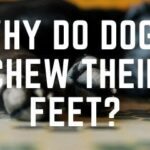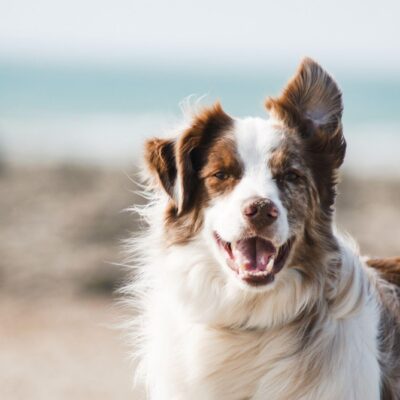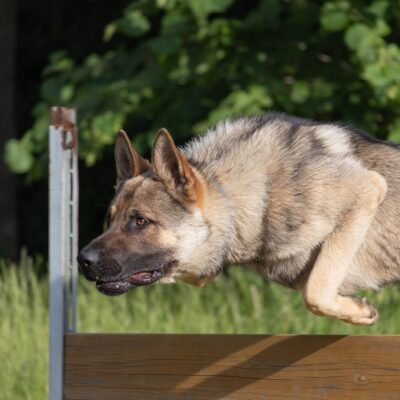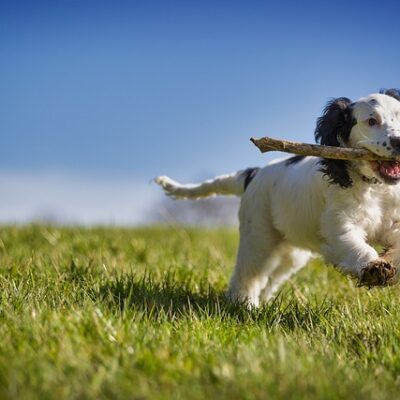Why do dogs have whiskers? Dogs use their whiskers every day as a sensory function to help them move around. ‘Whiskers’ are the long hairs either side of a dog’s muzzle. Dog’s whiskers are also known as vibrissae, which comes from the Latin word ‘vibrio.’
Busy? Get Your Hands Paws On The Answers Quickly…
- Where Can You Find A Dogs Whiskers?
- What Are Whiskers And Are They Useful?
- Do All Dog Breeds Have Whiskers?
- How Do You Care For Your Dogs Whiskers?
- FAQs
WHERE CAN YOU FIND A DOGS WHISKERS?
A dog’s whiskers can be found on either side of their muzzle. As well as either side of their muzzle, whiskers can also be found above their eyes (forehead), on their chin and above their upper lip. As the puppy starts to grow, their whiskers are among one of the first things to develop.
WHAT ARE WHISKERS AND ARE THEY USEFUL?
Whiskers are twice as thick as regular dog hair. The roots are deeply embedded into the dog’s skin. At the base of the whiskers lie follicles that are full of nerves. These nerves are a super-sensitive receptor, sending sensory messages to the dog’s brain.
The whiskers follicles pick up minute vibrations in the air, subtle shifts in wind direction and speed, and air currents. This enables a message to the dog’s brain to alert them that a presence of prey or other objects nearby. These receptive signals can help the dog determine the size and shape of these objects. Dogs’ whiskers are as sensitive as our (humans) fingertips, this vital part of the body helps dogs to understand their environment and move around during the day and night.
A dog is reliant on their whiskers to move around at night when their vision is limited. Their sensitive whiskers help them gain an understanding of their environment. As they move around, the air around them bounces off any oncoming objects. It is picked up by their whiskers, thus ensuring they do not bump into things or fall downstairs, etc.
DO ALL DOG BREEDS HAVE WHISKERS?
In short, no. Just like humans, dogs come in all different shapes and sizes (breeds), and the whiskers are no exception. Some dogs may develop several whiskers, long or short, and a difference in thickness. Some dogs may also not develop any whiskers at all.
HOW DO YOU CARE FOR YOUR DOGS WHISKERS?
From time to time, you may notice your dog has lost a whisker, or you find one lying around the house. This is nothing to worry about as their whiskers will grow back and replace the lost one. However, it is worth noting that if your dog loses whiskers regularly, a trip to the vets to ensure there is no long term problem.
It has been known that some dog groomers and owners have cut the dog’s whiskers. This is not recommended at all. As previously mentioned, the whiskers are of high importance and help dogs move around and detect upcoming objects. Please do not cut them for any reason unless a professional veterinarian as approved.
What happens when you cut off a dog’s whiskers?
As mentioned in the blog post above, if you or a dog groomer decide the cut/trim the whiskers of your dog, it will affect their responsiveness to objects. It could end up causing harm if they fall or walk into things.
Do whiskers grow back on a dog?
Yes, the whiskers on a dog will grow back. This doesn’t mean you should cut or pull them out.
How many whiskers does a dog have?
Dogs can have up to 20 whiskers.
Do dogs see color?
Although it is difficult to prove, scientists suggest that dogs can see shads of yellow and blue but cannot see green to red.
Why do dogs have wet noses?
The main reason a dog’s nose is wet is that they secrete a mucus that helps their sense of smell. Another reason is that dogs also sweat through their paws and nose.
Looking for more pawsome posts? Check these out…
Can Dogs Eat Lettuce?
How To Make A Snuffle Mat
When Do Puppies Lose Their Teeth?
Can Dogs Eat Broccoli?
Can Dogs Eat Watermelon?
Disclaimer: Each dog is different, and every circumstance is different. All efforts have been made to provide accurate information. However, it is not provided by a qualified Veterinarian, Veterinarian Surgeon, or Behaviorist. The information provided is purely educational. The information should not be used as an alternative or substitute for medical care. If you have any health or medical concerns, contact a qualified Veterinary Surgeon or Veterinarian immediately.










No Comment! Be the first one.